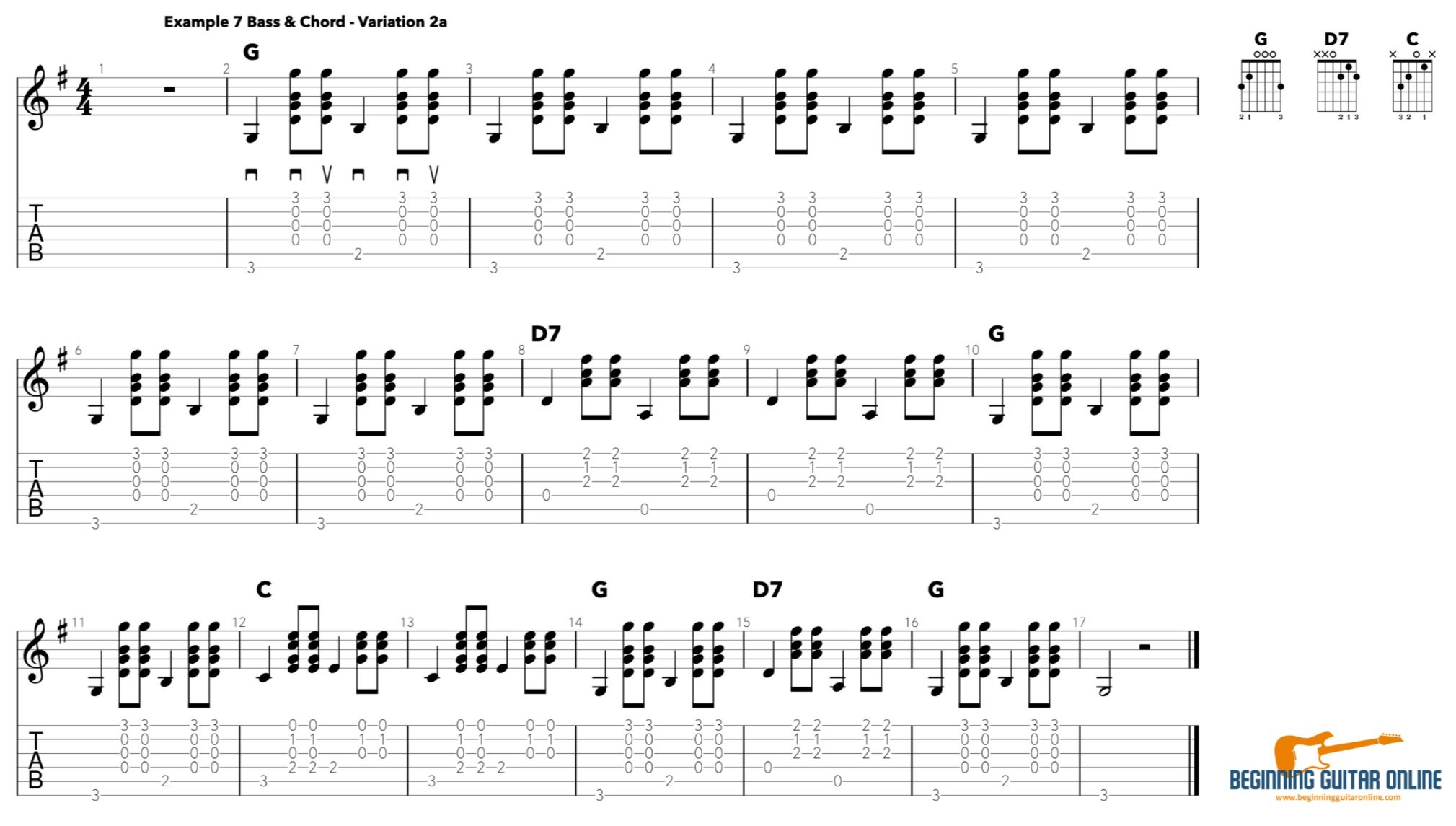How to Play When The Saints Go Marching In - Folk Song Favorites
How to Play When The Saints Go Marching In Video Transcription and Lesson Examples
Hello, friends. Chris with BeginningGuitarOnline.com. In this episode of folk song favorites, we're going through When the Saints Go Marching In. We're starting off learning the melody of the piece using single notes, a flat pick, and all downstrokes.
Learning the Melody for When the Saints Go Marching In
We come in on beat two, so here's our count off, one, two, three, four, one. Here we go for a closer view of the melody, coming in on beat two.
Here, we'll play through it a second time, and we'll count out the beats as we go. Again, we're coming in on beat two.
4 Strumming Pattern Options for the Rhythm Guitar Part
The chords we'll be using are G, C, and D7. We'll keep our first finger down on the C, pivot around and add our second finger on the A, our third finger on the F sharp and strum starting on the fourth string D and back to G.
You'll notice in this configuration, I like to use my pinky on the top note. The other way of playing the G is to play it with our first finger on the B, our middle finger on the low G, and our ring finger on that high G on the first string. This can be useful in other contexts, but I really do feel that the best G a person can learn when beginning guitar is this one, where the ring finger is on the low G, the second finger is on the fifth string B, and our pinky is on the first string G found on the third fret.
This allows us to maneuver quickly to the C chord. And then from the C chord, pivot around to our D7, place our pinky on the G and jump back to the G chord. And here we get a good view of our strumming hand. We'll be playing all downstrokes at first.
Example 3 “Downstrokes”
Here, we'll be adding our emphasis on the root note of each chord played on beats one and three with a full downstroke on beats two and four. It'll sound like this. C chord, D7, back to G. Let's play through it together.
In this variation of our strum pattern, we'll be playing the root note first and then playing the adjacent bass note second, C chord, D7, back to G. Let's play through it together.
And in our final variation here, we'll be adding our eighth note subdivision to our strumming pattern.
This simply means we're playing down, down, up, down, down, up, down, down, up on each of the chords. We'll first do it where we're just emphasizing the root note of the chord and then we'll play through it together doing our alternating bass pattern also known as Travis picking. Let's play through it together. One, two, three, four, one.
Here we go adding our alternating bass plucks, also known as Travis picking, along with our down, down, up strum pattern. G will sound like this, C will sound like this, and D7 will sound like this, back to G. Here we go one more time through our Travis picking bass pattern and our down, down, up strum pattern.
As always, thanks for watching. Click Subscribe below if you haven't yet. Leave us any comments below and visit us at beginningguitaronline.com. Also, sign up for our newsletter and check out the other educational resources we have available to you.







